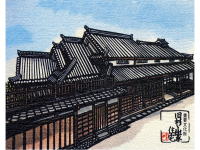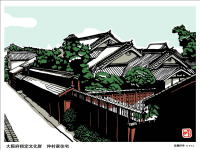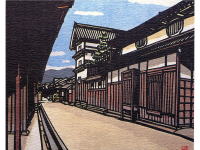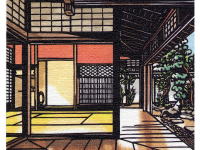富田林寺内町の探訪
I'm glad to intorduce an old town, Jinaimachi, Tondabayashi, Osaka, Japan as a national historic district and heritage site.
It takes 30 minutes from Osaka city to Tondabayashi station by Kintetsu railways. A 10-minutes walk will take you to the historic town.
ギャラリー
hayashi-cho street (east hayashi-cho, west hayashi-cho)
| 【Tourist guide to Jinaimachi town, Tondabayashi, a historic district and heritage site of Japan - Hayashi-cho street】 | |
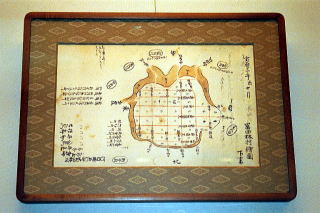 old illustrated village map in 1753 |
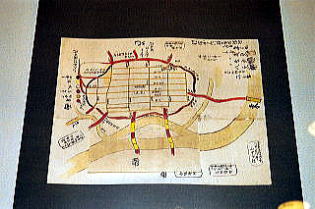 old illustrated village map in 1778 |
| Town Planning - street arrangements The town was developed in all directions around Koushouji Betsuin Buddhist Temple or Tondabayashi Gobo, laying out the grid-shaped town plan with seven streets called suji and eight avenues called cho. Suji runs north to south and Cho runs east to west. The seven streets of suji are, in order from east to west, Higashi-suji, Kamegasaka-suji, Jyounomon-suji, Tomi-suji, Ichiba-suji and Nishi-suji. The remaining suji was a little narrower in width than the others and its trace and name was disappeared. The eight avenues of cho, in order from north to south, are Ichiriyama-cho, Tomiyama-cho, Kita Kaisho-cho (north Kaisho-cho), Minami Kaisho-cho (south Kiasho-cho), Sakai-cho, Gobo-cho, Nishi Hayashi-cho (West Hayashi-cho) and Higashi Hayashi-cho (east Hayashi-cho). Hayashi-cho was divided into the east one and the west one during the period of 1753-1778 and then the town has eventually consisted of six streets of suji and eight avenues of cho. |
|
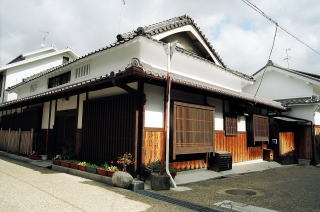 the Asano family residence whose exterior look has been repaired (Kamegasaka street, east Hayashi-cho street |
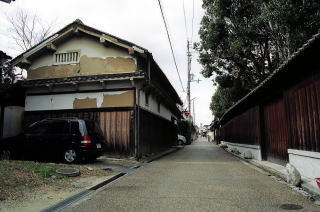 townscape in east Hayashi-cho steret |
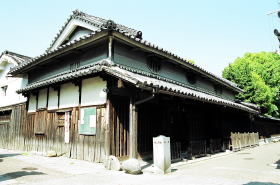 the Hashimoto family residence |
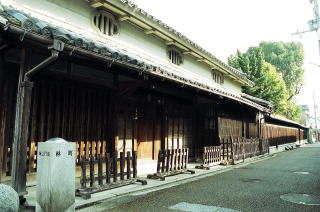 the Hashimoto family residence |
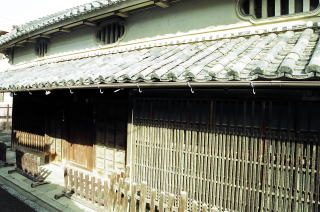 the Hashimoto family residence |
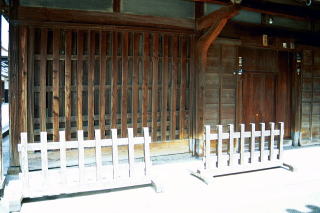 the Hashimoto family residence |
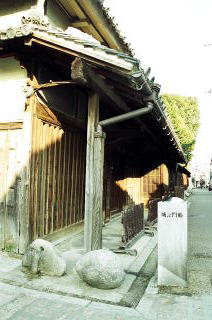 the Hashimoto family residence |
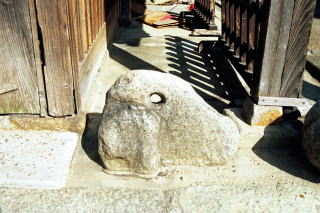 the Hashimoto family residence・ a stone with a hole to tie with rope of horse |
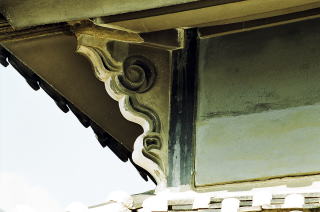 the Hashimoto family residence・sikkui mochiokuri or decorative mortar fire wal |
|
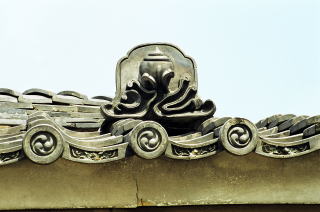 the Hashimoto family residence |
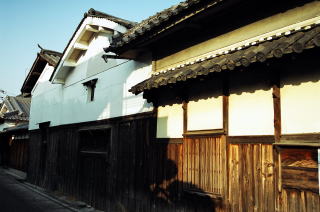 the Hashimoto family residence |
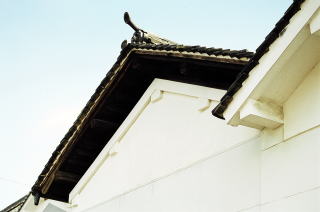 the Hashimoto family residence ・Okiyane roof |
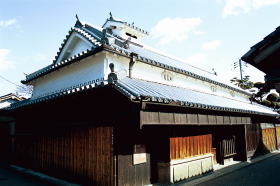 the Kiguchi family residence |
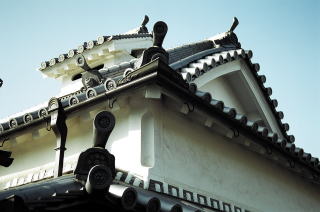 the Kiguchi family residence |
 the Kiguchi family residence built-in lattice window |
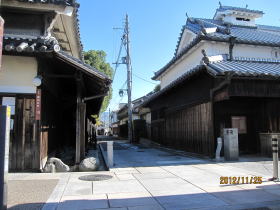 |
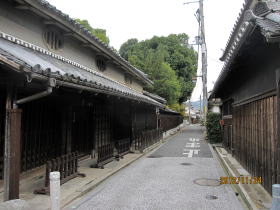 |
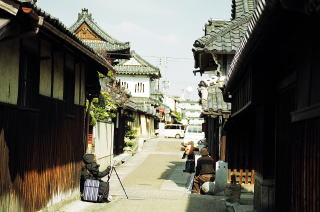 the Kiguchi family residence Visitors being seated, enjoying sketching the historic townscape besides the street on February 11, 2004 |
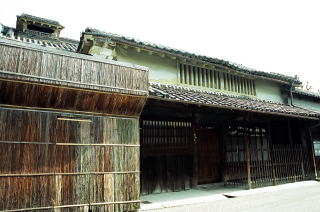 the Nakamura family residence - tangible cultural property of Osaka prefecture |
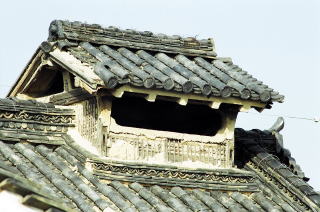 the Nakamura family residence - tangible cultural property of Osaka prefecture・overtopped roof for smoke ventilation (east side) |
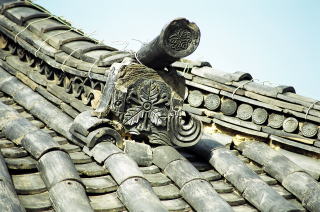 the Nakamura family residence - tangible cultural property of Osaka prefecture |
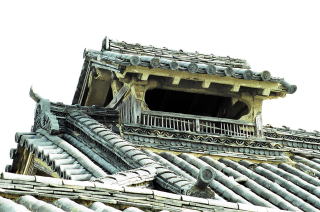 the Nakamura family residence - tangible cultural property of Osaka prefecture・ overtopped roof for smoke ventilation (west side) |
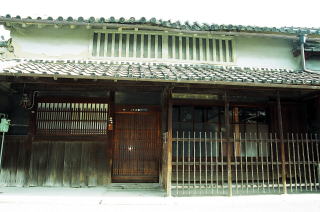 the Nakamura family residence - tangible cultural property of Osaka prefecture |
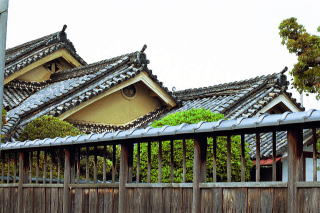 the Nakamura family residence - tangible cultural property of Osaka prefecture |
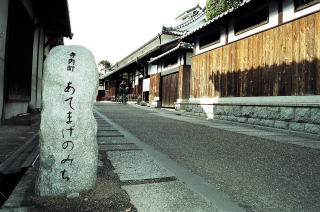 「Atemage-no-michi」stone post (literally means “the road struck and bent”) The streets in the town area are laid out in a grid running north-south and east-west, and the original town planning has been left at present. For the security reason, the two streets crossing at right angles were slightly deviated on purpose, then the structure made it difficult for foreign enemy who invaded the town to foresee straight a distant place. The structure was often seen in castle towns at that time. |
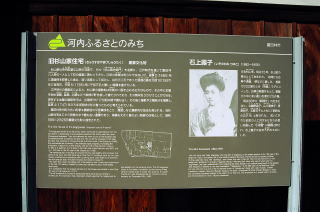 Ms. Tsuyuko Isonokami, a woman poet in the Meiji era was born in the Sugiyama family. |
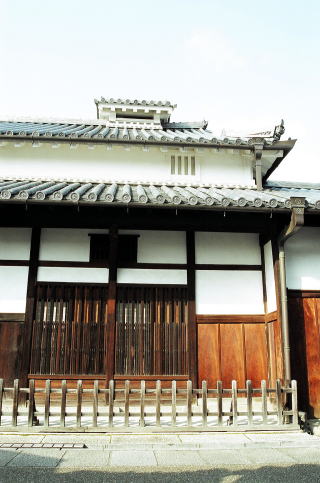 the former Sugiyama family residence - an important cultural property of the country |
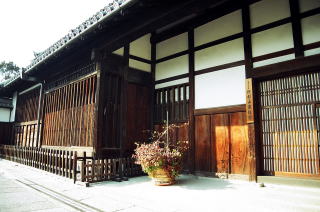 the former Sugiyama family residence - an important cultural property of the country |
|
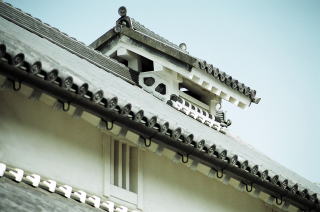 short-height second story and overtopped roof for smoke ventilation |
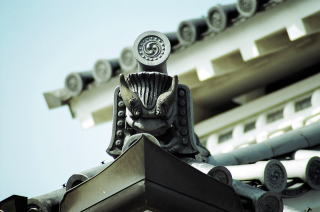 ridge-end tile with evil's face |
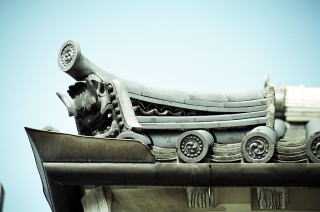 the former Sugiyama family residence - an important cultural property of the country |
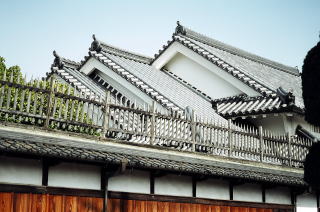 the former Sugiyama family residence - an important cultural property of the country |
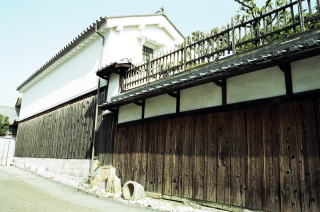 the former Sugiyama family residence - an important cultural property of the country |
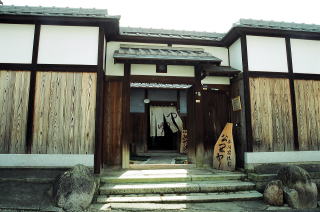 the Katsuma family residence (Italian cuisine restaurant OASI) |
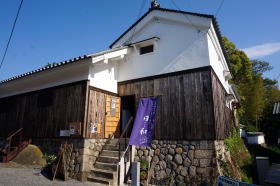 warehouse of the Katsuma family residence (tableware shop of Hiyori) |
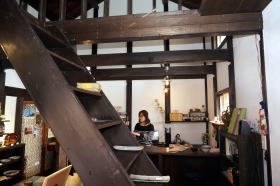 warehouse of the Katsuma family residence (tableware shop of Hiyori) |
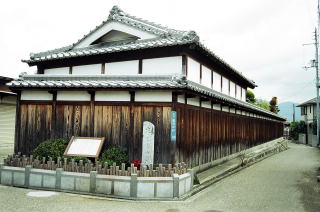 the stone post warns "No holding a burning match cord and and no holding a burning cigarette in the town” located at the entrance of town along the Higashi Koya highway(west Higashi-cho) |
There exists the fire prevention stone stand which served as a signpost
along the Higashi-Kouya highway at the south end of the town. |
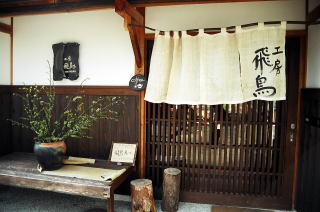 Pottery workshop Asuka |
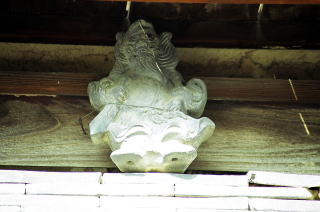 the Kawakami family residfence(Shokisan - imaginary goodluck talisman) |
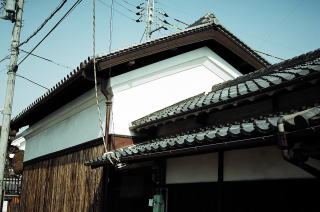 warehouse along hayashi-cho street (Okiyane style rooftop) |
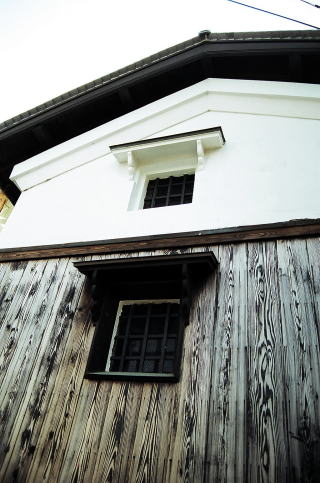 warehouse along hayashi-cho street (Okiyane style rooftop) |
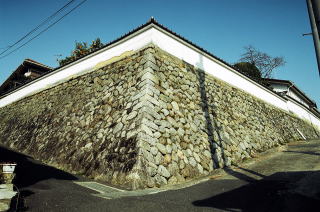 stone wall of the former house of Mr. Choe-mon Nakamura, a leading representative of Jinaimachi town among business & commerce industry in the end of Edo period,which was later used for local municipality office in the Meiji period.(west Hayashi-cho street) |
|
|
The important preservation district for historic buildings in group of
the country Among approximately 500 buildings in the Jinaimachi town, 181 buidlings
which were built from Edo period to early Showa period has been identified
as traditional buildings. Advanced approval and authorization by the Cultural
Properties Protection Division of Board of Education, Tondabayashi Municipality
office has to be obtained when any changes of appearance of the status
quo including renovation, repair, remodeling, color, new construction and
demolish are planned within the preservation district. Through landscaping
works for preservation and restoration, historic district has kept the
old days' appearence of white wall, board fences, and lattice of quiet
rustic buildings where people are even now living as a place of life. |
|
Information
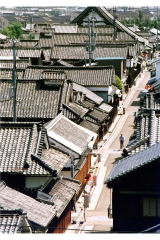
Jinaimachi in Tondabayashi(Jyounomon-suji street)
Photo: provided by Tondabayashi Municipality, unauthorized copying and
replication are strictly prohibited.
Location
Jinaimachi town, Tondabayashi city, a national historic preservation district
and heritage site of Japan, which is located in the south-eastern part
of Osaka prefecture, the western part of Japan.
It is a 10-minute walk from the Tondabayashi Staion or the Tondabayashi
Nishiguchi Station of Kintetsu Nagano line.
From Kansai International Airport
Airport Limousine Bus service available bound for Kawachi Nagano Station.
(60 minutes) Please take Kintetsu railways from Kawachi Nagano to Tondabayashi.(15
minutes)
From Osaka International Airport (Itami Airport)
Airport Limousine Bus service available bound for Abenobashi Station. (30
minutes) Please take Kintetsu railways from Abenobashi terminal to Tondabayashi.(30 munites)
From JR Shinkasen Shin-Osaka station or
Osaka (Umeda) station
Please take Subway Midousuji line from Shin-Osaka station or Osaka (Umeda)
station to Tennoji Station. (20~30 minutes) Please change trains at Tennoji
and take Kintetsu railways from Abenobashi terminal to Tondabayashi. (30
minutes)
The site-seeing map available in English
Please stop by to the Tourist Information Cetnter or Jinaimachi Visitor
Center.
Restrooms
Available at Jinaimachi Visitor Center (Jinaimachi Kouryuukan), Jinaimachi
Center and Jinaimachi Tenbou Hiroba (Viewing Terrace)
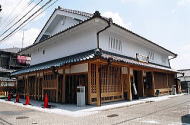
Visitor Center
(Jinaimachi Kouryuukan,
Town Community Center)
Address
9-29, Tondabayashi-cho, Tondabayashi city, Osaka, 584-0033, Japan
TEL.+81-(0)721-26-0110
FAX.+81-(0)721-26-0110
open 10a.m. until 5 p.m.
closed on Monday
Visitor Parking
Road width is very narrow in Jinaimachi town. If traveling by car, please
use Tondabayashi Municipal east parking newly opened in February 2014 (Toll
parking).
You can park the minibus for groups and passenger cars for general use.
Only one parking lot available for minibus, you must book it in advance
with Tondabayashi City Hall. A 15-minute walk to the Jinaimachi Visitor
Center and 5 minute walk up to the former Sugiyama family house, an important
national cultural property.
You will note that you will contact Tondabayashi Municipality Office for
a parking lot of large tourist bus for groups. Thank you in advance for
your kind cooperation.
